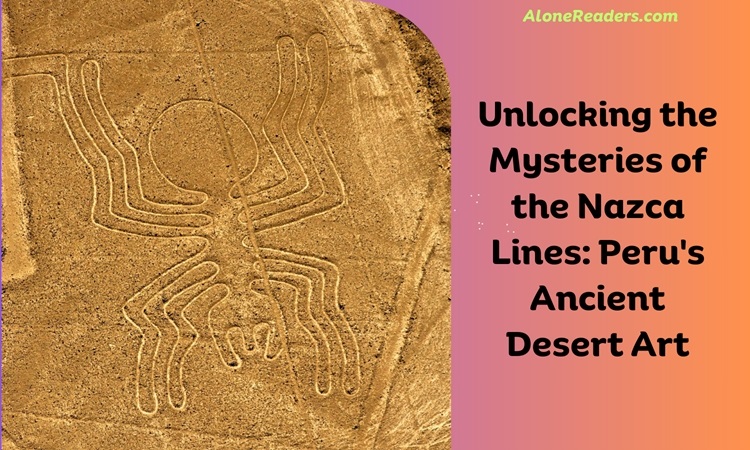
Approximately 2,000 years ago, a pre-Inca civilization embarked on an extraordinary and enigmatic project on the arid coastal plains of Peru. This ambitious endeavor resulted in the creation of the Nazca Lines, an intricate array of massive drawings etched into the earth. These geoglyphs, largely unnoticed until the advent of aerial exploration in the 1930s, represent one of the most baffling and awe-inspiring archaeological wonders of the ancient world.
The Nazca Lines comprise over 1,000 distinct designs, varying from simple straight lines that can stretch up to 30 miles to complex geometric shapes like trapezoids and spirals. Remarkably, the precision and scale of these designs defy the technological capabilities of their time, provoking questions about the methods and motivations of their creators. The lines are so vast that they can only be fully appreciated from the air, a perspective that their creators could never have experienced.
Among these designs, the most captivating are the representations of various animals, plants, and anthropomorphic figures. The assortment includes a spider, a hummingbird, a monkey, a whale, a two-headed snake, a dog, and a figure colloquially known as “The Astronaut.” Each figure is executed with such accuracy and detail that they are instantly recognizable, despite their monumental scale. The presence of these drawings in a landscape virtually devoid of such flora and fauna adds an extra layer of mystery to their purpose and meaning.
The discovery of these lines has not ceased to amaze the world, with as many as 168 new geoglyphs identified as recently as 2022. The ongoing discoveries suggest that the Nazca culture had an extensive and sophisticated understanding of their environment, despite the harsh desert conditions in which they thrived. However, despite extensive research and analysis, the purpose of the Nazca Lines remains a topic of debate among historians, archaeologists, and scholars.
One of the most prominent hypotheses about the purpose of the Nazca Lines relates to water rituals. This theory is supported by the arid environment of the region and the importance of water in Andean cultures. Some researchers propose that the lines may have been part of elaborate rituals to invoke the gods for rain or to mark the paths of underground water sources. Others suggest that they might have served astronomical purposes, aligning with celestial bodies or marking significant events in the lunar or solar calendar.
Alternative theories abound, ranging from the lines being a complex labyrinth for spiritual journeys to being part of agricultural practices or even extraterrestrial in origin. Each hypothesis brings its own set of supporting evidence and conjecture, contributing to the rich tapestry of interpretations surrounding these ancient geoglyphs.
Despite decades of study, the Nazca Lines continue to be a source of fascination and mystery. They stand as a testament to the ingenuity and artistry of the Nazca culture, a civilization that left behind one of the most striking and enigmatic legacies in human history. As research continues and new technologies emerge, there is hope that further insights will be gained into the purpose and meaning of these extraordinary desert drawings.